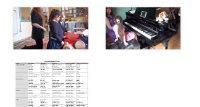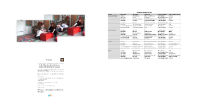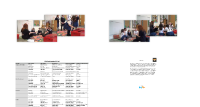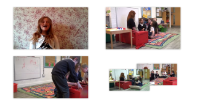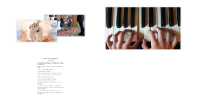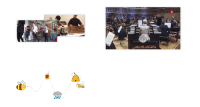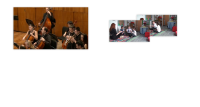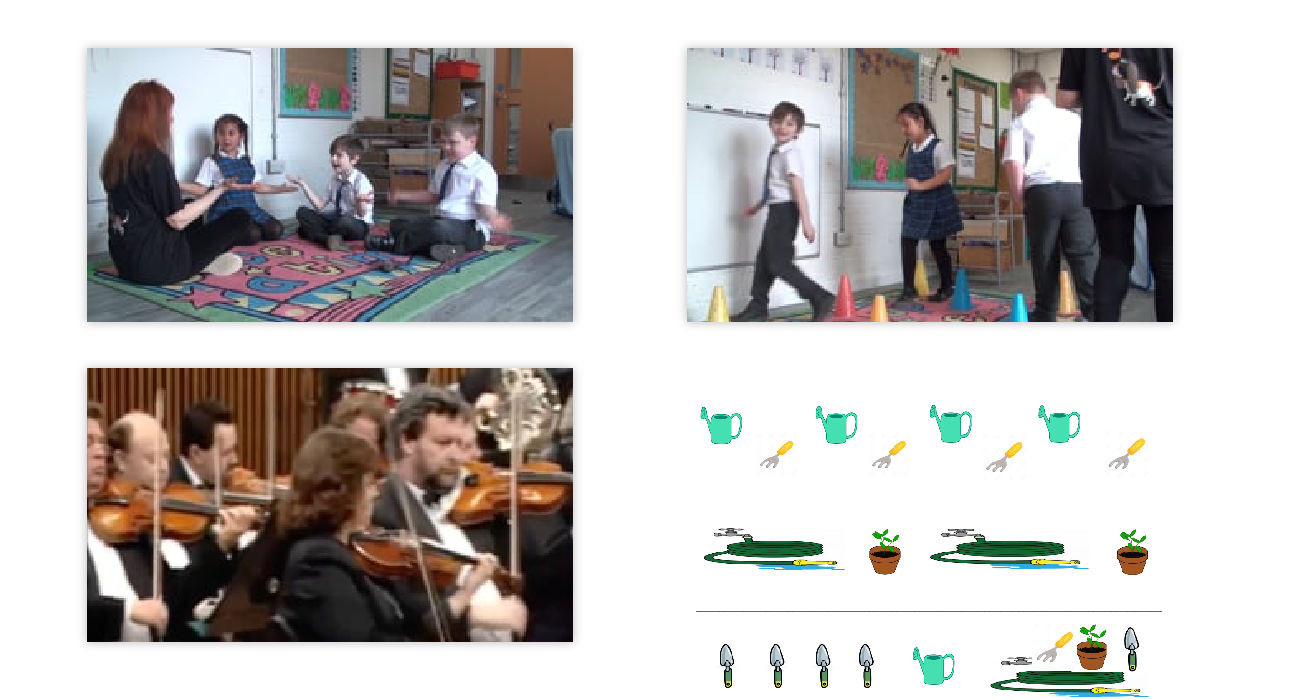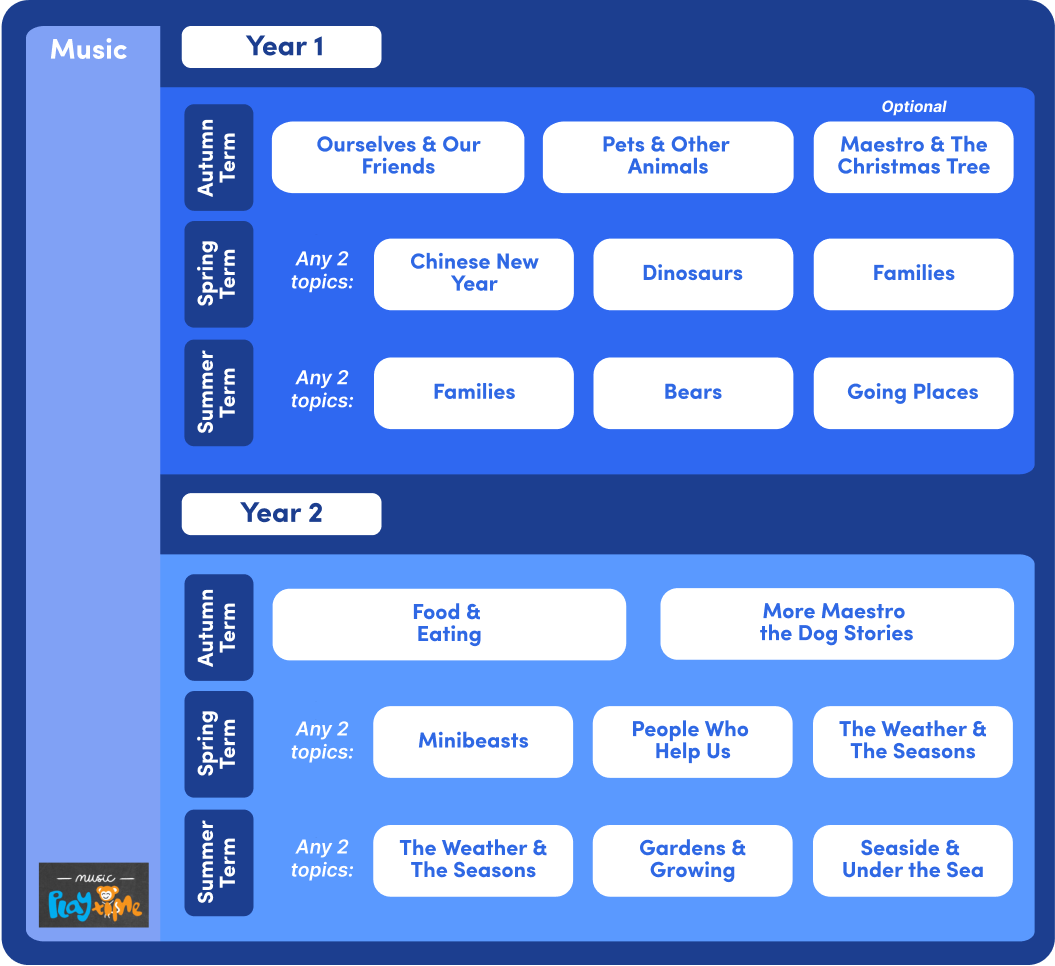Gardens & Growing Level: Key Stage 1

Re-cycle, Reduce, Re-use
Here's a poem to start you off on this topic. It could be learned by rote and then chanted rhythmically:
- Recycle, reduce, re-use
- To keep our planet green
- Don’t drop litter on the ground
- To keep the planet clean
- __
- Mobile phones and bottles
- Cans and clothes and shoes
- Don't just throw them all away
- Recycle, reduce, re-use
- __
- ©E-MusicMaestroPublishing Limited
When the children can chant the poem fluently, try adding body percussion to make it sound like a rap. Either all the children can make body percussion sounds as the chant the words or they could take it in turns to be in a small group to supply the 'backing track'.
Here's some help with ideas for body percussion from the Salvo Russo Youtube channel where you'll find more fantastic ideas:
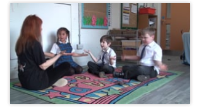
Come and Meet my Earthworm!
Guess what - despite being a keen gardener, I have a bit of a phobia about harmless worms. This song is my apology to them!
We had a laugh because Thomas thought I said 'Come and eat my earthworm'!
- Come and meet my earthworm
- He's slimy, long and thin
- I'd like to take him home to tea
- But dad won't let him in
- Doo doo doo doo doo earthworm
- My dad won't let him in
- __
- Come and meet my spider
- Her body's big and round
- Her legs are long and hairy
- And she doesn't make a sound
- Doo doo doo doo doo spider
- She doesn't make a sound
- __
- Meet my caterpillar
- He's furry, brown and soft
- And one day when he's older
- He'll turn into a moth
- Doo doo doo caterpillar
- He'll turn into a moth
- __
- © Music-Playtime: Arts Enterprise Limited
What Can We Grow?
This song is about growing plants for eating, by both humans and bees. The tune is the same one as Frere Jacques.
- What can we grow in our garden
- For our lunch, for our lunch?
- Apples tees and pear trees
- Blueberries and plum trees
- Munch, munch, munch
- Munch, munch, munch
- __
- What can we grow in our garden
- For our tea, for our tea?
- Cabbage and potatoes
- Lettuce and tomatoes
- Beans and peas
- Beans and peas
- __
- What can we grow in our garden
- For the bees, for the bees?
- Lavender and bluebells
- Sunflowers and harebells
- Plant them please
- Plant them please

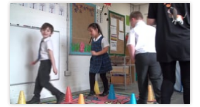
In and Out the Dusky Bluebells
My mum taught me this singing game from the North East of England. Depending on where you live, the words and the game tend to be different so you may come across alternative versions.
- In and out the dusky bluebells
- In and out the dusky bluebells
- In and out the dusky bluebells
- Follow the leader
- __
- Pitter pitter patter on my shoulder
- Pitter pitter patter on my shoulder
- Pitter pitter patter on my shoulder
- Follow the leader

Plant Sticks
Show the children how to make their own stick-music-scores to show the word-rhythms of different flowers or trees. The sticks represent rhythms - two close together shows a two-syllable word and one on its own is a one-syllable word that takes up the same length of time. Choose a range of one- and two-syllable plants and trees in advance so that you don't run into complications such as 'Western Red Cedar' (yes, it is a real tree name!). Show and play to model this activity for the children, giving them plenty of practice clapping your stick-rhythms, making sure they understand the relationship between your sticks and your plants.
When each child has created a music score, they swap with a partner, who plays the rhythm on a percussion instrument. To make this more challenging, try asking the children to draw just the sticks without writing in the names - this must be done evenly spaced to it's best to provide printed grids with four boxes for filling in, as in the picture.


The Garden Band (structure, texture, timbre)
The Garden Band is where the children use gardening implements to create original music! These are the instruments you could use:
- Watering can drum (tap the body with hands)
- Garden rake guitar (strum the tines with a stick)
- Trowel tinger (hit the metal part with a stick)
- Hosepipe horn (blow into it with nearly closed, 'buzzing' lips to make the sound)
- Plant pot shakers (tie plastic plant pots together with string, upside down and shake them)
For the hosepipe horns you will need a hosepipe, plastic funnels, duct tape. I suggest that you make one yourself first, before helping the children to make their own:
Cut a garden hose into lengths and give one to each child, with a plastic funnel. The children inset one into the other (depending on which has a slightly bigger hole), then they secure it with duct tape. To make a sound, you have to purse your lips against the hole and make them vibrate together enough to produce a rude noise! This makes the air inside the pipe vibrate, which creates the sound. For a really deluxe version you could buy cornet (brass instrument) mouth mouthpieces to push into the end of the hose!
photograph courtesy of Dana Gorman
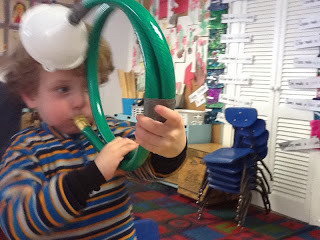
What to Play
Children usually produce the best creative music when they have guidelines rather than a completely free invitation to make something up. This is an opportunity to do what jazz musicians do, which is to use an agreed structure as a basis for improvising. It's best if they don't all play at once, for instance. You may like to download the graphic score, or to make up your own. When using this graphic score, the children may play literally to a steady pulse - one watering can symbol = one bang on the watering can - or they could play more freely eg several bangs per symbol.

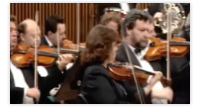
Country Gardens (timbre, pulse)
This is a cheerful piece of music called Country Gardens, arranged by the composer Percy Grainger, just right for walking in time through a pretend garden. It would be good to do this outside because you need a biggish space.
I suggest that you help the children to make tissue paper flowers or petals to be strewn around the area in advance. Ask the children to imagine they are walking through a garden, smelling the roses and picking up flowers and letting them flutter to the floor, pointing up at the blossom on the trees.
After they have moved to the music, the children can watch the video and see which instruments make the sounds. It's good, in this technological age, for children to see how the sounds are made by real instruments.
Name That Tune!
Many children will know this tune. It's fun to begin with clapping the rhythm - a few children might guess the tune just from hearing it clapped.
The next stage is for you to play the tune, either on a recorder, chime bars or whatever is available, or by playing the soundfile. If you learned to play the recorder as a child, you will definitely know it! The notes are:
- B A G A B B B
- A A A B D D
- B A G A B B B
- G A A B A G G
Charlie is playing it for you here, on descant recorder:
The tune is usually called Merrily We Roll Along but it's also the tune of Mary Had a Little Lamb so, of course, either answer is correct.
Once the children have named the tune, they can learn to play it too on recorders, chime bars, xylophones or a keyboard.

- Merrily we roll along
- Roll along, roll along
- Merrily we roll along
- Right down the grassy hillside

Reduce, re-use, run-around game (PSHE, literacy)
This game is from the Garden Organic website and it may be adapted to suit the age of the children. It would be best played in the hall, the playground or on a field. The instructions are below but you really need to refer to the Garden organic website for more detailed information. I suggest that you do lots of preparatory activity and incorporate learning to read the words on the cards, for added value.
The resources needed may be downloaded from the Garden organic website:
- Waste picture cards
- Destination cards
- Answer sheet
What to do:
- Place the destination cards around the playground
- Stand in the middle, holding the waste cards with the children gathered round you, then hold up each card for the children to see and read.
- The children run to the right destination for that card.
- Explain briefly why an item will go to that destination and what will happen to it there.
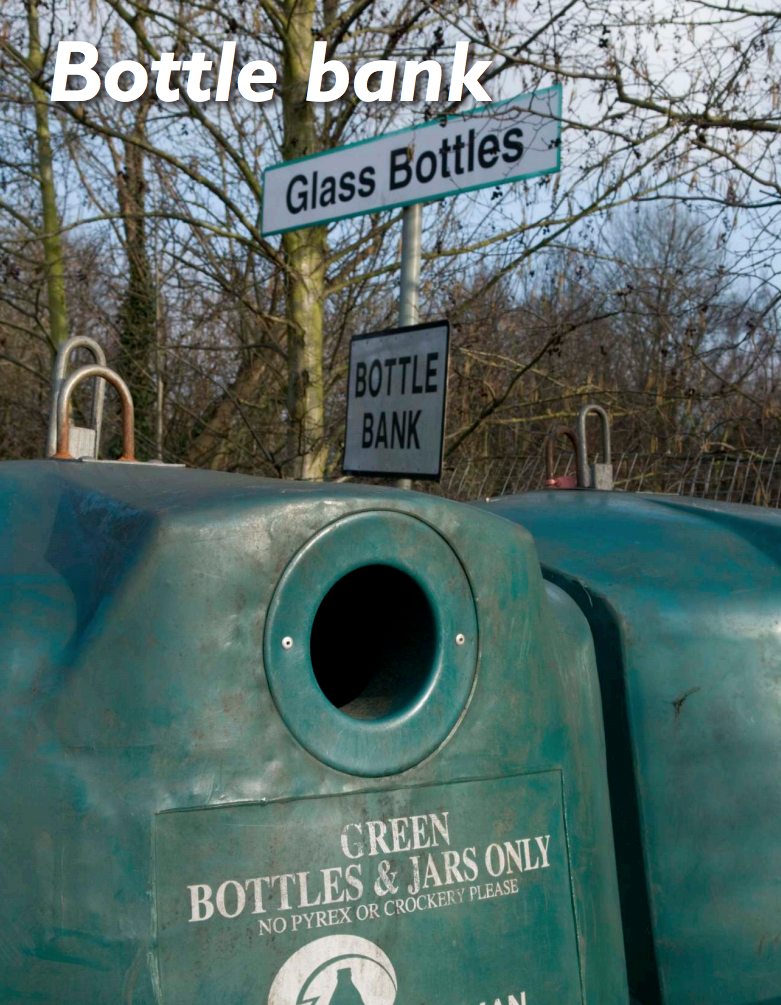
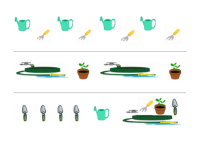

Re-cycle, Reduce, Re-use
Here's a poem to start you off on this topic. It could be learned by rote and then chanted rhythmically:
- Recycle, reduce, re-use
- To keep our planet green
- Don’t drop litter on the ground
- To keep the planet clean
- __
- Mobile phones and bottles
- Cans and clothes and shoes
- Don't just throw them all away
- Recycle, reduce, re-use
- __
- ©E-MusicMaestroPublishing Limited
When the children can chant the poem fluently, try adding body percussion to make it sound like a rap. Either all the children can make body percussion sounds as the chant the words or they could take it in turns to be in a small group to supply the 'backing track'.
Here's some help with ideas for body percussion from the Salvo Russo Youtube channel where you'll find more fantastic ideas:

Come and Meet my Earthworm!
Guess what - despite being a keen gardener, I have a bit of a phobia about harmless worms. This song is my apology to them!
We had a laugh because Thomas thought I said 'Come and eat my earthworm'!
- Come and meet my earthworm
- He's slimy, long and thin
- I'd like to take him home to tea
- But dad won't let him in
- Doo doo doo doo doo earthworm
- My dad won't let him in
- __
- Come and meet my spider
- Her body's big and round
- Her legs are long and hairy
- And she doesn't make a sound
- Doo doo doo doo doo spider
- She doesn't make a sound
- __
- Meet my caterpillar
- He's furry, brown and soft
- And one day when he's older
- He'll turn into a moth
- Doo doo doo caterpillar
- He'll turn into a moth
- __
- © Music-Playtime: Arts Enterprise Limited
What Can We Grow?
This song is about growing plants for eating, by both humans and bees. The tune is the same one as Frere Jacques.
- What can we grow in our garden
- For our lunch, for our lunch?
- Apples tees and pear trees
- Blueberries and plum trees
- Munch, munch, munch
- Munch, munch, munch
- __
- What can we grow in our garden
- For our tea, for our tea?
- Cabbage and potatoes
- Lettuce and tomatoes
- Beans and peas
- Beans and peas
- __
- What can we grow in our garden
- For the bees, for the bees?
- Lavender and bluebells
- Sunflowers and harebells
- Plant them please
- Plant them please


In and Out the Dusky Bluebells
My mum taught me this singing game from the North East of England. Depending on where you live, the words and the game tend to be different so you may come across alternative versions.
- In and out the dusky bluebells
- In and out the dusky bluebells
- In and out the dusky bluebells
- Follow the leader
- __
- Pitter pitter patter on my shoulder
- Pitter pitter patter on my shoulder
- Pitter pitter patter on my shoulder
- Follow the leader

Plant Sticks
Show the children how to make their own stick-music-scores to show the word-rhythms of different flowers or trees. The sticks represent rhythms - two close together shows a two-syllable word and one on its own is a one-syllable word that takes up the same length of time. Choose a range of one- and two-syllable plants and trees in advance so that you don't run into complications such as 'Western Red Cedar' (yes, it is a real tree name!). Show and play to model this activity for the children, giving them plenty of practice clapping your stick-rhythms, making sure they understand the relationship between your sticks and your plants.
When each child has created a music score, they swap with a partner, who plays the rhythm on a percussion instrument. To make this more challenging, try asking the children to draw just the sticks without writing in the names - this must be done evenly spaced to it's best to provide printed grids with four boxes for filling in, as in the picture.


The Garden Band (structure, texture, timbre)
The Garden Band is where the children use gardening implements to create original music! These are the instruments you could use:
- Watering can drum (tap the body with hands)
- Garden rake guitar (strum the tines with a stick)
- Trowel tinger (hit the metal part with a stick)
- Hosepipe horn (blow into it with nearly closed, 'buzzing' lips to make the sound)
- Plant pot shakers (tie plastic plant pots together with string, upside down and shake them)
For the hosepipe horns you will need a hosepipe, plastic funnels, duct tape. I suggest that you make one yourself first, before helping the children to make their own:
Cut a garden hose into lengths and give one to each child, with a plastic funnel. The children inset one into the other (depending on which has a slightly bigger hole), then they secure it with duct tape. To make a sound, you have to purse your lips against the hole and make them vibrate together enough to produce a rude noise! This makes the air inside the pipe vibrate, which creates the sound. For a really deluxe version you could buy cornet (brass instrument) mouth mouthpieces to push into the end of the hose!
photograph courtesy of Dana Gorman

What to Play
Children usually produce the best creative music when they have guidelines rather than a completely free invitation to make something up. This is an opportunity to do what jazz musicians do, which is to use an agreed structure as a basis for improvising. It's best if they don't all play at once, for instance. You may like to download the graphic score, or to make up your own. When using this graphic score, the children may play literally to a steady pulse - one watering can symbol = one bang on the watering can - or they could play more freely eg several bangs per symbol.


Country Gardens (timbre, pulse)
This is a cheerful piece of music called Country Gardens, arranged by the composer Percy Grainger, just right for walking in time through a pretend garden. It would be good to do this outside because you need a biggish space.
I suggest that you help the children to make tissue paper flowers or petals to be strewn around the area in advance. Ask the children to imagine they are walking through a garden, smelling the roses and picking up flowers and letting them flutter to the floor, pointing up at the blossom on the trees.
After they have moved to the music, the children can watch the video and see which instruments make the sounds. It's good, in this technological age, for children to see how the sounds are made by real instruments.
Name That Tune!
Many children will know this tune. It's fun to begin with clapping the rhythm - a few children might guess the tune just from hearing it clapped.
The next stage is for you to play the tune, either on a recorder, chime bars or whatever is available, or by playing the soundfile. If you learned to play the recorder as a child, you will definitely know it! The notes are:
- B A G A B B B
- A A A B D D
- B A G A B B B
- G A A B A G G
Charlie is playing it for you here, on descant recorder:
The tune is usually called Merrily We Roll Along but it's also the tune of Mary Had a Little Lamb so, of course, either answer is correct.
Once the children have named the tune, they can learn to play it too on recorders, chime bars, xylophones or a keyboard.

- Merrily we roll along
- Roll along, roll along
- Merrily we roll along
- Right down the grassy hillside

Reduce, re-use, run-around game (PSHE, literacy)
This game is from the Garden Organic website and it may be adapted to suit the age of the children. It would be best played in the hall, the playground or on a field. The instructions are below but you really need to refer to the Garden organic website for more detailed information. I suggest that you do lots of preparatory activity and incorporate learning to read the words on the cards, for added value.
The resources needed may be downloaded from the Garden organic website:
- Waste picture cards
- Destination cards
- Answer sheet
What to do:
- Place the destination cards around the playground
- Stand in the middle, holding the waste cards with the children gathered round you, then hold up each card for the children to see and read.
- The children run to the right destination for that card.
- Explain briefly why an item will go to that destination and what will happen to it there.






